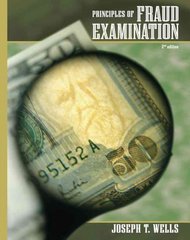Can you please help with these three questions?
1) A-E
A)
\fThe Greensboro Performing Arts Center {GPAC} has a total capacity of 7,700 seats: 2,000 center seats, 2,500 side seats, and 3,200 balcony seats. The budgeted and actual tickets sold for a Broadway musical show are as follows: Percentage Occupied Ticket Budgeted Actual Price Seats Seats Cente r 5 T 5 80% E 5% Side 55 T0 T5 Balco ny 5 5 T 5 55 The actual ticket prices were the same as those budgeted. Once a show has been booked, the total cost does not vary with the total attendance. Required: Compute the following for the show: 1. The budgeted and actual sales mix percentages for different types of seats. 2. The budgeted average contribution margin per seat. Assume the ticket price is also the contribution margin. 3a. The total sales mix variance. 3b. The total sales quantity variance. 4. The total sales volume variance. Complete this question by entering your answers in the tabs below. Req 1 Req 2 Req 3A Req 3B Req 4 The budgeted and actual sales mix percentages for different types of seats. {Round your answers to 4 decimal places. (i.e. .123456 = 12.3456%}) __ Reqz > Required: Compute the following for the show: 1. The budgeted and actual sales mix percentages for different types of seats. 2. The budgeted average contribution margin per seat. Assume the ticket price is also the contribution margin. 3a The total sales mix variance. 3b. The total sales quantity variance. 4. The total sales volume variance. Complete this question by entering your answers in the labs below. Reg 1 Reg 2 Reg 3A Reg 33 Reg 4 The budgeted average contribution margin per seat. Assume the ticket price is also the contribution margin. (Round your answer to 2 decimal places.) ( Req1 Req 3A > attendance. Required: Compute the following for the show: 1. The budgeted and actual sales mix percentages for different types of seats. 2. The budgeted average contribution margin per seat. Assume the ticket price is also the contribution margin. 3a The total sales mix variance. 3b. The total sales quantity variance. 4. The total sales volume variance. 0 Answer is not complete. Complete this question by entering your answers in the labs below. Req 1 Reg 2 Req 3A Reg 33 Req 4 The total sales mix variance. [Round your answers to the nearest whole dollar amount.) Center Favorable a Side Favorable @ Balcony Unfavorable @ Total Favorable a ( Req2 Req BB > TransPacifI'c Airlines (TPAJ budgeted 80 million passenger miles, or 5% of the total market forthe yearjust completed, at a contribution margin of 40 cents per mile. The budgeted average price was 52 cents per passenger mile. The operating data for the year show that TPA flew 69.12 million passenger miles with an average price of48 cents per passenger mile. The terrorist activity in the early part of the year in several countries in the region decreased the total miles own by all airlines for the year by 10%. There is no flexiblebudget variance for all costs. Req uired: '_ In an effort to understand the operating results, you are asked to compute the following. {Do not round intermediate calculations. Enter your answers in whole dollars} 6 Answer is not complete. a Selling price variance Unfavorable o b. Sales volume variance Unfavorable 0 c. Market size variance Unfavorable o d. Market share valiance Unfavorable o RJM Enterprises is a manufacturer of consumer electronics products. The industry is very competitive, and RJM has seen its prots fall in recent years, including an operating loss of $18,585 last year. RJM was able to turn that around this year by aggressively cutting costs. The summarized financial results for RJM are shown below: Current Year Prior Year Gross sales: 5934,5320 51,215,545 Less variable costs Direct materials 556,365 ?46,200 Direct labor 329,280 511,375 Total contribution margin 5 55,272 5 15,470 Fixed costs 33,509 34,855 Operating income 5 21,?63 5 (13,585] Jim Green, the management accountant at RJM, is analyzing the company's performance for this year in order to explain to management the specific aspects that drove the company to success. Some of the information Jim obtained follows: Current Year Prior Year Sales units 39,200 45,500 Price 5 23 . 55 5 2? . 99 Direct materials cost per unit of material 5 7.50 5 8.20 Direct materials required per unit 1.80 2.00 Direct labor required per unit 8.50 6.?5 Nage rate {$J'hour) 5 14.00 5 15.00 ' Assume that RJM, for efficiency and to reduce cost, maintains little or no direct materials or workinprocess inventory. Required: 1. Determine the selling price variance for the current year based on sales dollars. Determine the sales volume variance based on contribution margin. 2. Determine the following variable cost variances: a. The usage and price variances for direct materials. b. The efciency and rate variances for direct labor. 9 Answer is not complete. '1. Selling price variance in sales dollars Unfavorable a Sales volume variance in contribtion Unfavorable 0 23. Materials usage variance Favorable 0 Materials price variance Favorable 0 2b. Labor usage variance Favorable 0 Labor rate varia nce Favorable a













